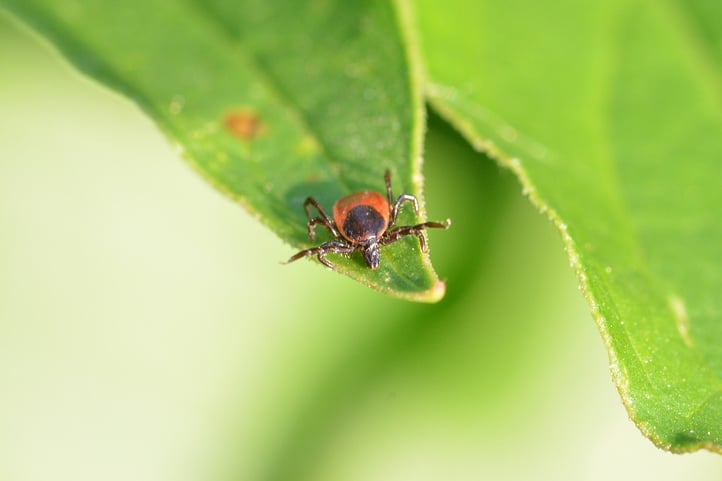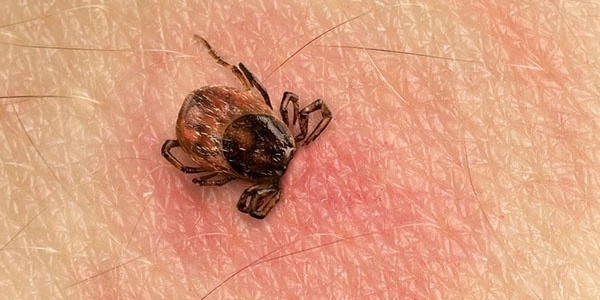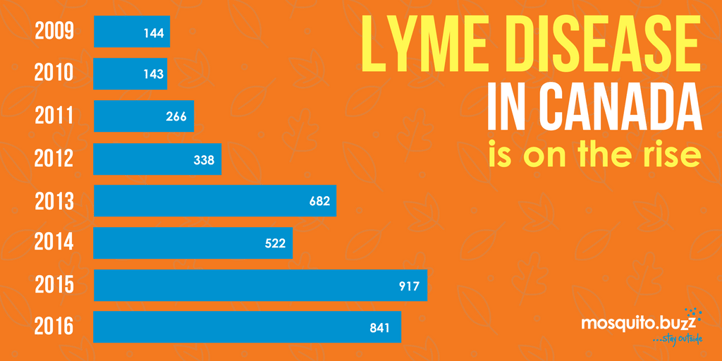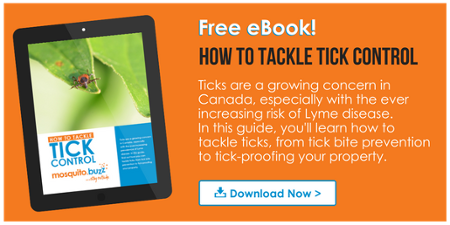
Lyme disease is the most common vector-borne disease in North America. The disease was first recognised in Connecticut in 1975, and is caused by a bacteria called Borrelia burgdorferi. It is transmitted to humans through the bite of an infectious blacklegged tick.
Blacklegged ticks (also known as deer ticks) are widespread throughout Canada, due to tick larvae and nymphs attaching themselves to migratory birds. Bird-borne ticks thus create the possibility of infectious tick bites almost anywhere in Canada.
Where You'll Find Infected Ticks
Ticks are often found in wooded or grassy areas. This puts anyone that loves the great outdoors at risk, particularly those who like to hike, hunt, or go camping, as well as children, pets, and people who work in tick-prone locations.
Areas where ticks and Lyme disease have been confirmed over a number of years of active field surveillance are called endemic areas. This includes many provincial parks and regions in Southern, Eastern, and North Western Ontario, Southern Manitoba, Southern British Columbia, Southern New Brunswick, Southern Nova Scotia, and Southern Quebec.

Source: Government of Canada
How Humans and Animals Contract Lyme Disease
For you or your pet to contract Lyme disease, you would need to have been bitten by an infected blacklegged tick.
For this to happen, a tick would have attached itself to you or your pet. Ticks don't jump or fly; instead, they rest on low growing grasses or plants and wait for a host (human or animal) to pass by. When you or your pet brush past the plant, the tick will cling to clothing or fur, before crawling around looking for a place to attach itself and start feeding.
Once the tick has bitten, bacteria enters the skin and eventually makes its way into the bloodstream. In most cases, it takes around 36 to 48 hours of attachment for Lyme disease to be transmitted, so if you discover an attached tick, it's important to carefully extract it as soon as possible.
If the tick looks swollen, it may have been feeding for a long enough time to transmit bacteria, which is why it's so important to take the correct precautions if you or your pet have been in tick-prone areas.

Surveillance of Lyme Disease
Canada monitors the incidence of Lyme disease in 3 ways;
- Reported cases to provincial health organisations
- Voluntary submission of ticks collected from people, pets, and doctors
- Studies in the field to collect ticks (active surveillance)
Lyme disease is on the rise in Canada. In 2016, the Canadian government received word of approximately 841 cases of Lyme disease, and the numbers have been steadily growing over the last 10 years.

Preventing Lyme Disease
The best prevention against contracting Lyme disease is to avoid tick bites. This includes;
- Wearing appropriate clothing (closed-toe shoes, long-sleeved apparel)
- Pulling socks over pant legs when outdoors
- Using insect repellent containing DEET or permethrin
- Reducing tick habitat around your property
- Treating your property with tick barrier protection
Our team of licensed and trained tick control experts can protect your family from the risk of Lyme disease, by treating your property with tick barrier protection.
Talk to us today about our tick control and mosquito control service, or follow us on Facebook for weekly tick and mosquito bite prevention tips.



